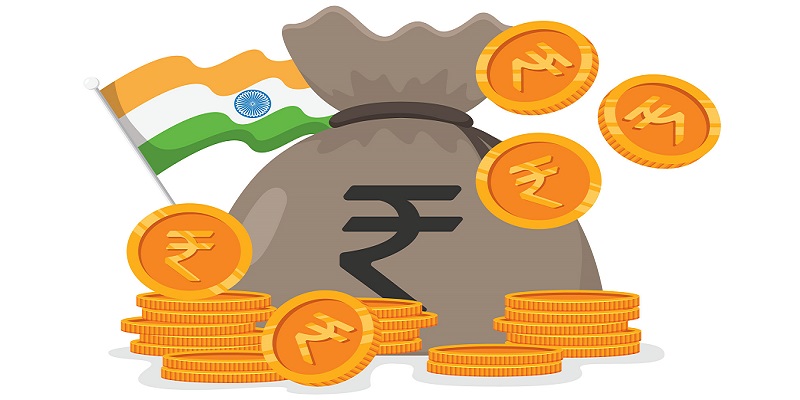Schedule a Call Back
Is budget 2018-19 a step in the right direction?
 Indian Economy
Indian Economy- Mar 01,18
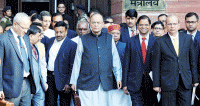
With emphasis on agriculture, MSMEs and rural area, the budget was on the expected lines. Rakesh Rao explores the impact of the budget on various sectors.
In line with the Government’s long-term economic vision, the focus of this year’s budget, the last full budget of the current government, was clearly on rural development, housing, health, MSMEs (micro, small & medium enterprises) and infrastructure. While the budget gave relief to companies with turnover of up to Rs 250 crore, it failed to address the corporate tax rate issue for larger corporates.
Rakesh Khanna, CEO, Orient Electric, maker of consumer electrical products, said, “The budget reiterated the focus on rural development which we believe will provide an opportunity for the electrical industry to work with the government. Also, the government’s proposed plan to create a dedicated affordable housing fund in line with its plan of providing housing for all by 2022 is good news for the allied segments. Another welcome move is the announcement of identification of 372-point plan on ease of doing business which will attract investments and improve the overall business climate.”
The budget proposals to increase spends in rural areas, agriculture, infrastructure and major thrust on social sectors like health and education are expected to provide a growth impetus to the Indian economy and demand generation. Amar Kaul, Chairman and Managing Director, Ingersoll Rand (India) Limited, stated, “Major emphasis on skill development, housing for all, railway infrastructure, smart cities, food processing sector, agricultural market, science and technology and textile is a welcome move that will boost the capital goods segment. It will be interesting to see how the financial mechanism works."
Industry gaining from infrastructure thrust
A continued thrust on infrastructure creation will provide significant impetus to the revival of growth and creation of employment. Dr Jairam Varadaraj, MD, ELGi Equipments, said, “The budget continues to support investments in infrastructure, which will support our portable compressor range. Many of our suppliers will benefit from the MSME tax reduction and perhaps the tax reduction will encourage capital expenditure, which could in turn support our industrial compressor range. Overall, while there are no explicit manufacturing boosters, we hope that the momentum from the last quarter will sustain through 2018.”
Increased spend on infrastructure is likely to lead to growth in construction equipment market, which has been witnessing robust growth in the last few quarters. Vipin Sondhi, MD & CEO, JCB India Ltd, said, “The budget also addresses the opportunities to modernise and create new infrastructure in affordable housing, railways, airports which continues the effort of the last few years. These will present favourable opportunities for growth to the Indian construction equipment industry. Incentivisation to the MSME sector, which forms the backbone of industrialisation of a nation, as also job creation is another welcome step.”
‘Steel’ing the show
The new budget is encouraging for the steel sector, which will also benefit from renewed infrastructure push. Mitesh Prajapati, Director of Sameer Steel, said, “The government has stressed on infrastructure development which will result in the growth of steel sector. Furthermore, keeping companies with a turnover below Rs 250 crore in low corporate tax slab will boost steel business. The government has also emphasised on ‘Ease of Doing Business’ which will provide relief to traders. Besides, the empowerment of the Indian farmer will lead to increased sales of tractors and other agricultural equipment, which will, in turn, benefit the steel business.”
However, the rise is customs duties on components and raw materials could prove to be a dampener on the steel industry. Nikunj Turakhia, President of Steel Users Federation of India (SUFI), opined, “Expenditure worth Rs 14.34 lakh crore in rural infrastructure will really boost the confidence in steel sector and kick-start the consumption cycle. However, the expected custom duty on essential raw materials for the steel sector has not come down which is a major set-back for the steel mills.”
Forging ahead in defence
Over the last three and a half years, the government has given a lot of emphasis to modernising and enhancing the operational capability of the defence Forces. A number of initiatives have been taken to develop and nurture intrinsic defence production capability to make the country self-reliant for meeting its defence requirements.
The government has also opened up defence equipment manufacturing to private sector including liberalising foreign direct investment. As part of this ongoing initiative, Arun Jaitely, in budget, announced the government plans to develop two defence industrial production corridors in the country. In addition, the government will bring out an industry friendly Defence Production Policy 2018 to promote domestic production by public sector, private sector and MSMEs.
Muralishankar Sambasivam, President, Association of Indian Forging Industry (AIFI), commented, “One welcome move for the Indian forging industry would be the development of the defence corridor between Chennai and Bengaluru. Reduction in corporate tax from 30% to 25% for MSMEs would also be a positive encouragement.”
A refined move
Focus on boosting the country’s infrastructure, in the form of road connectivity and coverage of airports, will lead to increased consumption of petroleum products. B Anand, CEO of Essar Oil, said, “This is expected to help in the development of a number of towns in the country, spelling good opportunities for companies in the oil retailing, bitumen and ATF space to participate in the proposed nation building initiatives. The thrust on agricultural production, optimising farm income and the plans for Operation Green to benefit the agriculture sector will provide further avenues for diesel manufacturers to participate in the various activities related to these programs.”
Excise duty on petroleum products has been readjusted, with some portion of it being converted to cess for road development. The upsurge in gas connections under Pradhan Mantri Ujjwala Scheme is another positive step by the government which will create the need for more LPG in the country. “Some respite was expected to address the spiralling fuel prices in the country; however, the restructuring of rates and cesses on MS/HSD is tax neutral, and a marginal increase in the cess on crude has increased the cost to the refiners,” added Anand.
Putting rail development on track
In line with the government’s focus on strengthening the railways network in the country, the budget 2018-19 has enhanced the allocation for the Railways Ministry to Rs 148,528 crore. Tilak Raj Seth, Executive Vice President, Mobility, Siemens, commented, “The allocation for railways is up 13% compared to the last year, which is very good. There is a reemphasis on the issue of electrification, which we know from recent announcements is enhancing. The government has already stated that 4,000 kilometres would be completed this year.”
The budget also focuses on safety and capacity addition in terms of implementation of Train Protection and Warning System (TPWS). While plans are to add 160 kilometres of suburban lines, there is also a proposal for doubling of 90 kilometre of suburban lines in Mumbai. “These will provide impetus to more and better urban services in areas where it is required. The announcements, therefore, are in the direction of industry expectations. Another key direction given by the Finance Minister on infrastructure projects is that they will be monitored at the highest level, which means that the addition and implementation of projects will be timely and efficient,” said Raj Seth.
The proposal to set up a Railway University in Vadodara to train manpower required for high speed rail projects will provide much needed skill development in the railway industry. “Being a very specialised industry it requires a different skilling regimen. It might not solve everything in terms of skill development in the Indian railway industry, but it is still an important step,” opined Seth.
Push towards electrification of railways will aid growth of suppliers of electric products. “This is an overall inclusive growth augmented budget with special emphasis on the backbone of the economy: Agriculture, Health, Education and Infrastructure. We welcome the finance minister’s announcement of allocating Rs 1.48 lakh crore towards capital expenditure for Indian Railways, which is the highest ever amount provided till date for this sector. The Railway’s focus on modernization of signaling and safety systems along with optimum electrification will not only enhance the efficiency but can also move a large amount of trade traffic from road to railways. Most ancillary companies affiliated with rail infrastructure should benefit on account of this huge proposed capex allocated towards rail infrastructure,” stated Suramya Nevatia, CEO of Hind Rectifiers Ltd.
Empowering electrical & electronics sector
The allocation for Saubhagya scheme, allocation to infrastructure, railway, smart city and defence will boost power sector also. “We are very happy that pre-budget focuses lot on the electrical industry and the problems of the power sector. The government is also looking to reduce the power theft which would save more than 1 lakh crore per annum. The budget is an ideal balance between the agriculture and industry, and there is huge thrust on infrastructure and health care as well as on smart cities,” commented Shreegopal Kabra, President, Indian Electrical & Electronics Manufacturers' Association (IEEMA).
Sunil Misra, Director General, IEEMA, added, “We find the budget positive considering the fact that it is affecting a major part of the population positively. Rural electrification and social sector spend will in long term help consumer electrical industry. Special allocation to smart city will boost domestic electrical industry also increase in custom duty for certain item will also boost the industry.”
Encouraging robotics and automation
Probably for the first time, the budget emphases on enhancement of research activity in disruptive technologies like artificial intelligence (AI), Big Data, Internet of Things (IoT) and robotics. Pradeep David, General Manager, Universal Robots - South Asia, stated, “The allocation of the investments announced in the budget 2018-19 will help research and development in areas of machine learning, AI and robotics & automation.”
In the food processing industry, which is growing at 8% in the country, cobots (robots intended to physically interact with humans in a shared workspace) play a key role in end of line packaging automation - an essential area to be competitive for global and local food processing companies. David informed, “The Digital India program, a key to Industry 4.0 wherein cobots play an integral part as one of the key levers to supplement labour in terms of productivity, quality and ergonomics allowing India manufacturing to climb up the value chain. Lastly, the government’s outlook on the automation in major manufacturing industries, with the advent and adoption of newer technologies, will lead to increase in the efficiency of the business processes, operations and productivity.”
With the budget for Digital India initiative doubled this year, it is set to be one of the key drivers of India’s economic growth. “The Union Budget for 2018-19 has laid a strong emphasis on emerging technologies, such as robotics, artificial intelligence, machine learning, Big Data and IoT, which is an important step towards fostering innovation in the country. This would also help in creating jobs, improving the quality of education and healthcare. The announcement of a national program directed towards research and development of AI and Machine Learning, as well as efforts towards exploring Blockchain technology, are the testimony to the fact that India is taking significant steps to gain a rightful place on the global technology map,” stated Samay Kohli, Group CEO, GreyOrange.
MSMEs will also benefit from increase in automation. “Along with the push on technology, the new provisions for financial support, in the form of credit, financing and tax relief for MSMEs, will further boost the growth of smaller businesses in the country and help spur the Indian economy at large. With the stage set, we look forward to a great year of growth for the robotics and automation sector,” said Samay Kohli.
Pradeep David added, “MSMEs have been a pillar of major emerging economies like India. MSMEs being a focus for Universal Robots, the government investment and tax reliefs will encourage the growth of this sector and lead to further employment generation.”
Logistics on the roll
With the government outlining infrastructure as one of the focus areas of budget 2018-19, augurs good for the logistics industry, as a well-connected country will give a boost to this industry and help take the country to the next level of development.
“Infrastructure is the lifeline for logistics industry and the focus on rural infrastructure, roads, railways, development of highways, agriculture will help in the growth of logistics sector and attract more business. Connectivity is still a big issue in rural areas and it feels good to see that this has been addressed in this year’s budget. The allocation of Rs 500 crore for the development of agri-infrastructure, called Operation Green, will boost the logistics sector and facilitate development of cold chains and other hard infrastructure,” informed Brijesh Lohia, Managing Director of Global Ocean Group.
The completion of National Highways exceeding 9,000-km in 2018-19 will further help in expanding the logistics industry. Smart cities project with an outlay of Rs 2.04 trillion means development of infrastructure which will translate to more business for the logistics industry.
Lohia said, “Opening of national logistics portal as a single online window to connect all the stakeholders to be developed by the Department of Commerce is another welcome news for the logistics industry. However, the reduction of logistics cost as part of the GDP from the current 13%-15% has not been addressed, which is higher than other countries.”
The budget 2018 focus on job creation, rural healthcare, education, emerging technologies, MSMEs, etc will revitalise the economy post demonetisation thereby encouraging stability and growth. Similarly, policies such as imposing customs duty on components will encourage indigenous manufacturing and boost Make in India initiative.
The budget reiterated the focus on rural development which we believe will provide an opportunity for the electrical industry to work with the government. Rakesh Khanna, CEO, Orient Electric
Major emphasis on skill development, housing for all, railway infrastructure, smart cities, food processing sector, agricultural market, science and technology and textile is a welcome move that will boost the capital goods segment. Amar Kaul, CMD, Ingersoll Rand (India) Ltd
Many of our suppliers will benefit from the MSME tax reduction and perhaps the tax reduction will encourage capital expenditure, which could in turn support our industrial compressor range. Dr Jairam Varadaraj, MD, ELGi Equipments
The government’s outlook on the automation in major manufacturing industries will lead to increase in the efficiency of the business processes, operations and productivity. Pradeep David, GM, Universal Robots - South Asia
Special allocation to smart city will boost domestic electrical industry also increase in custom duty for certain item will also boost the industry. Sunil Misra, Director General, IEEMA
The Union Budget for 2018-19 has laid a strong emphasis on emerging technologies, such as robotics, AI, machine learning, Big Data and IoT, which is an important step towards fostering innovation in the country. Samay Kohli, Group CEO, GreyOrange
The empowerment of the Indian farmer will lead to increased sales of tractors and other agricultural equipment, which will, in turn, benefit the steel business. Mitesh Prajapati, Director of Sameer Steel
The expected custom duty on essential raw materials for the steel sector has not come down which is a major set-back for the steel mills. Nikunj Turakhia, President, SUFI
One welcome move for the Indian forging industry would be the development of the defence corridor between Chennai and Bengaluru. Muralishankar Sambasivam, President, AIFI
Budget highlights
Corporate tax reduced for companies with turnover up to Rs 250 crore from 30% to 25%
Rs 5.97 lakh crore allocation for infrastructure
Centres of excellence to be set up on robotics, Artificial Intelligence (AI), Internet of Things (IoT), etc
To incentivise domestic value addition and Make in India, customs duty increased on mobile phones and TV parts
Railway’s capex for the year 2018-19 pegged at Rs 148,528 crore
MSMEs provided Rs 3,794 crore for credit support & innovation
Related Stories
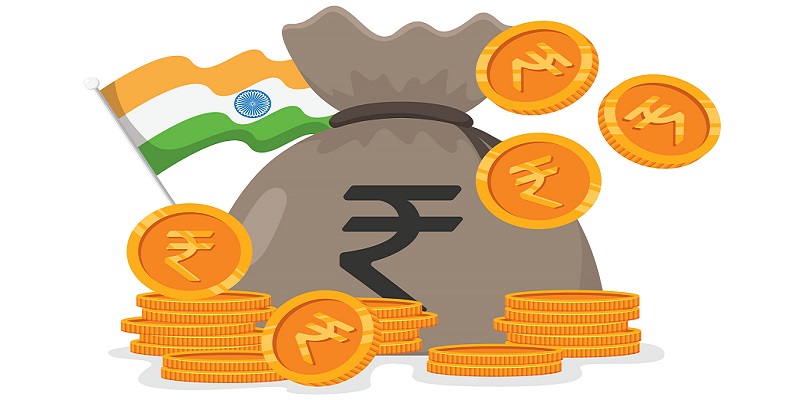
Budget 2024: 8 measures in support of MSMEs
The FM said that the Government has formulated a package that covers financing, regulatory changes and technology support for MSMEs.
Read more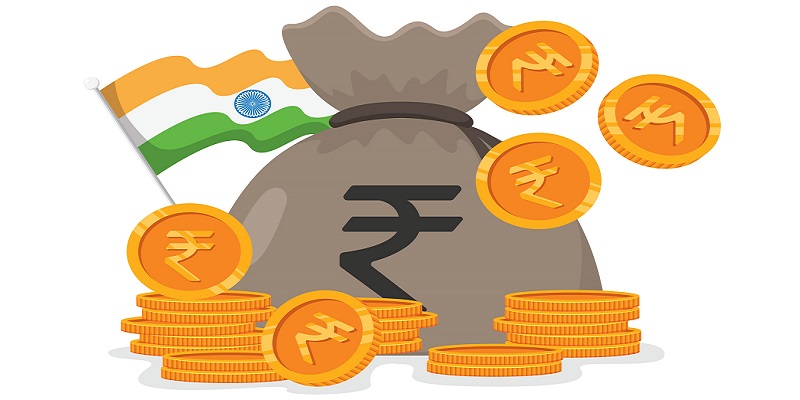
Budget 24-25: 12 ‘plug & play’ industrial parks to be created under NICDP
The Union Budget 2024-25 proposes to revamp ShramSuvidha and Samadhan portals to enhance ease of compliance for industry and trade, with intent to strengthen them and step up their implementation fo..
Read more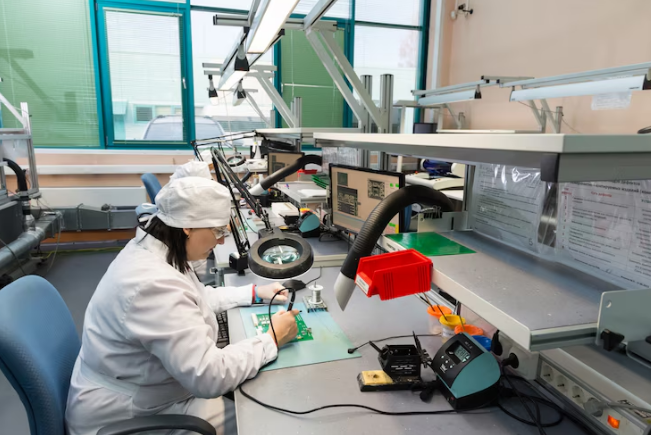
MSMEs' contribution to the GDP
As on 16.07.2024, the total employment reported by the MSMEs on the Udyam Registration Portal (since 01.07.2020 to 16.07.2024) is 203.9 million(including informal micro enterprises registered on Udy..
Read moreRelated Products
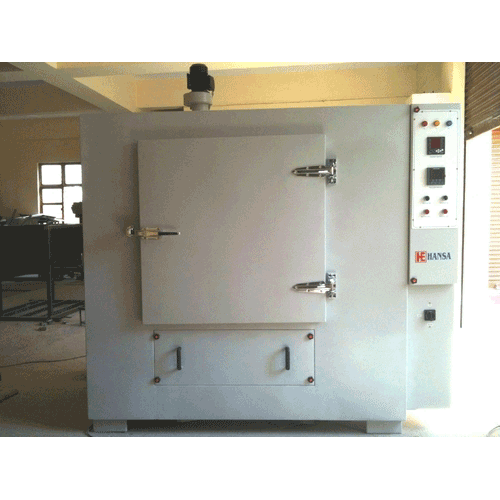
Heavy Industrial Ovens
Hansa Enterprises offers a wide range of heavy industrial ovens.
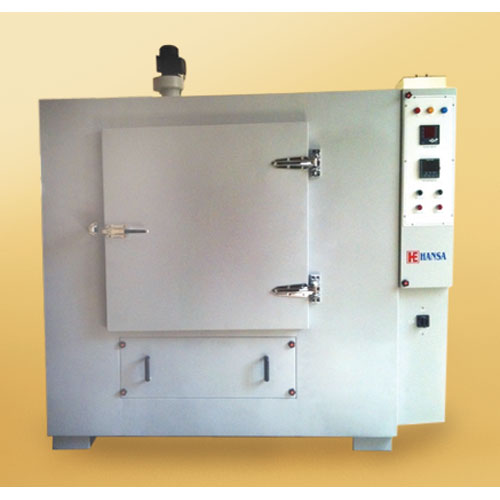
High Quality Industrial Ovens
Hansa Enterprises offers a wide range of high quality industrial ovens. Read more
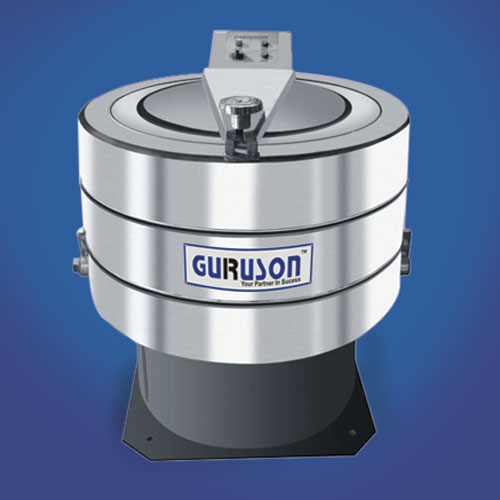
Hydro Extractor
Guruson International offers a wide range of cone hydro extractor. Read more





